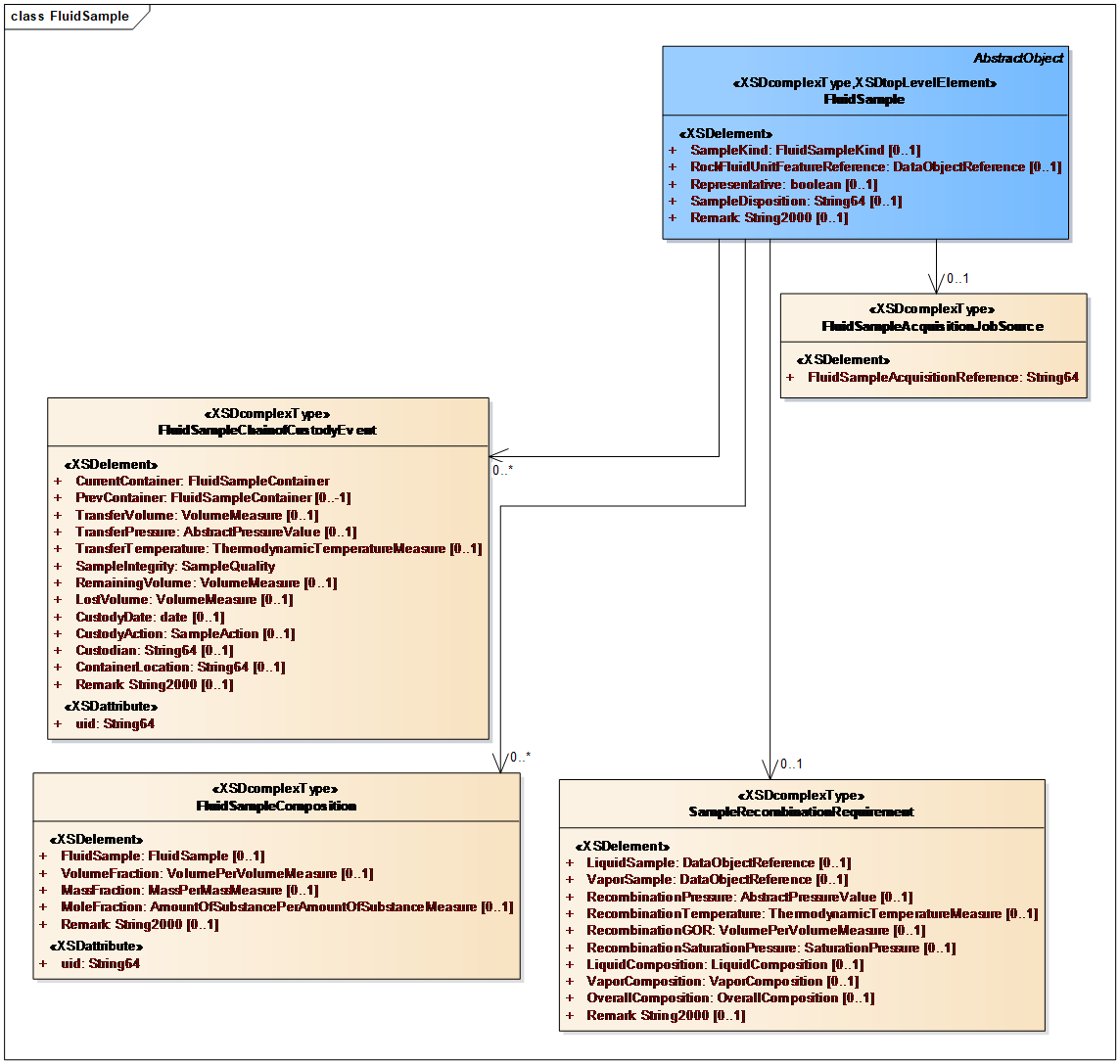10.3 Fluid Sample Data Object
| Topic Version | 1 | Published | 12/09/2016 | |
| For Standard | PRODML v2.0 | |||
Initially in a sampling project, each fluid sample represents a small amount of fluid extracted from a parent fluid system, as described by the fluid sample acquisition within the fluid sample acquisition job. Figure 10.3-1 shows the main elements of the fluid sample data object, which are further explained below the figure.

Each fluid sample is assigned a name to identify it within the context of its lifecycle. Each fluid sample can have a description of its source geologic feature. Information such as the expected reservoir temperature, pressure, and gas-liquid ratio are also recorded for each sample (some of the data is within the associated fluid sample acquisition in the fluid sample acquisition job). Other characteristics of a fluid sample include qualitative descriptors for sample quality and representativeness of the fluid sample.
Because fluid samples may be combined with other fluid samples—either by design in the case of recombination samples or for specific laboratory investigations using additional fluids—a new fluid sample can be described from the blending of other fluid samples. These synthesized samples are thereafter treated as regular fluid samples with additional data (the fluid sample composition) describing the identity and amounts of source fluid samples used. For a recombined liquid and vapor sample, the sample recombination requirement (i.e., the specification for the recombination) can be defined. Also, the disposition of a fluid sample may be recorded to describe what happened to the sample after analysis.
Often it is important to record the handling of the fluid sample before its analysis. To meet this requirement, a chain of custody may be transferred for each fluid sample. The chain of custody information includes the identity of the fluid sample containers in which the sample is stored, transfers of specific volumes from one container to another, the pressures, temperatures, locations and dates at which these transfers were conducted, and the identity of the custodians. As an essential element of chain of custody process, integrity checks, such as opening and closing pressures and temperatures for each fluid sample, may also be recorded for each transfer.